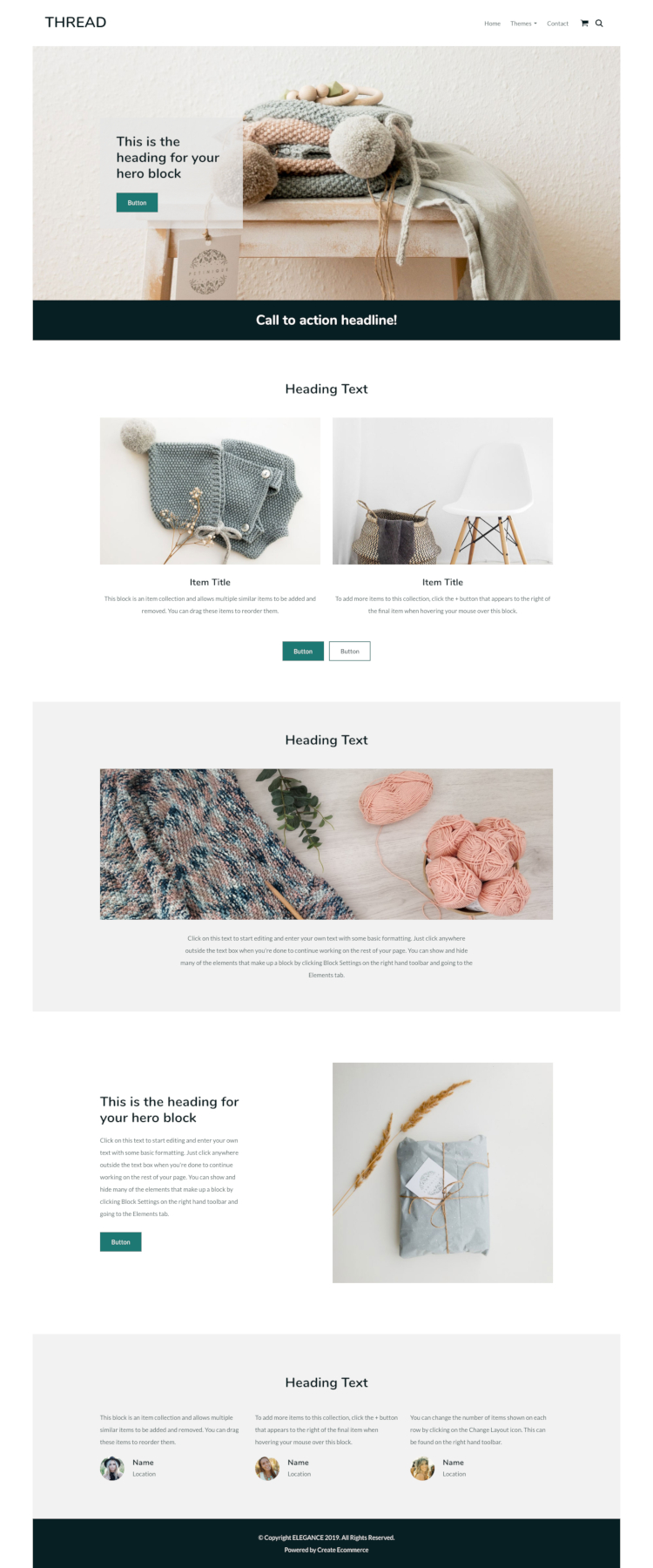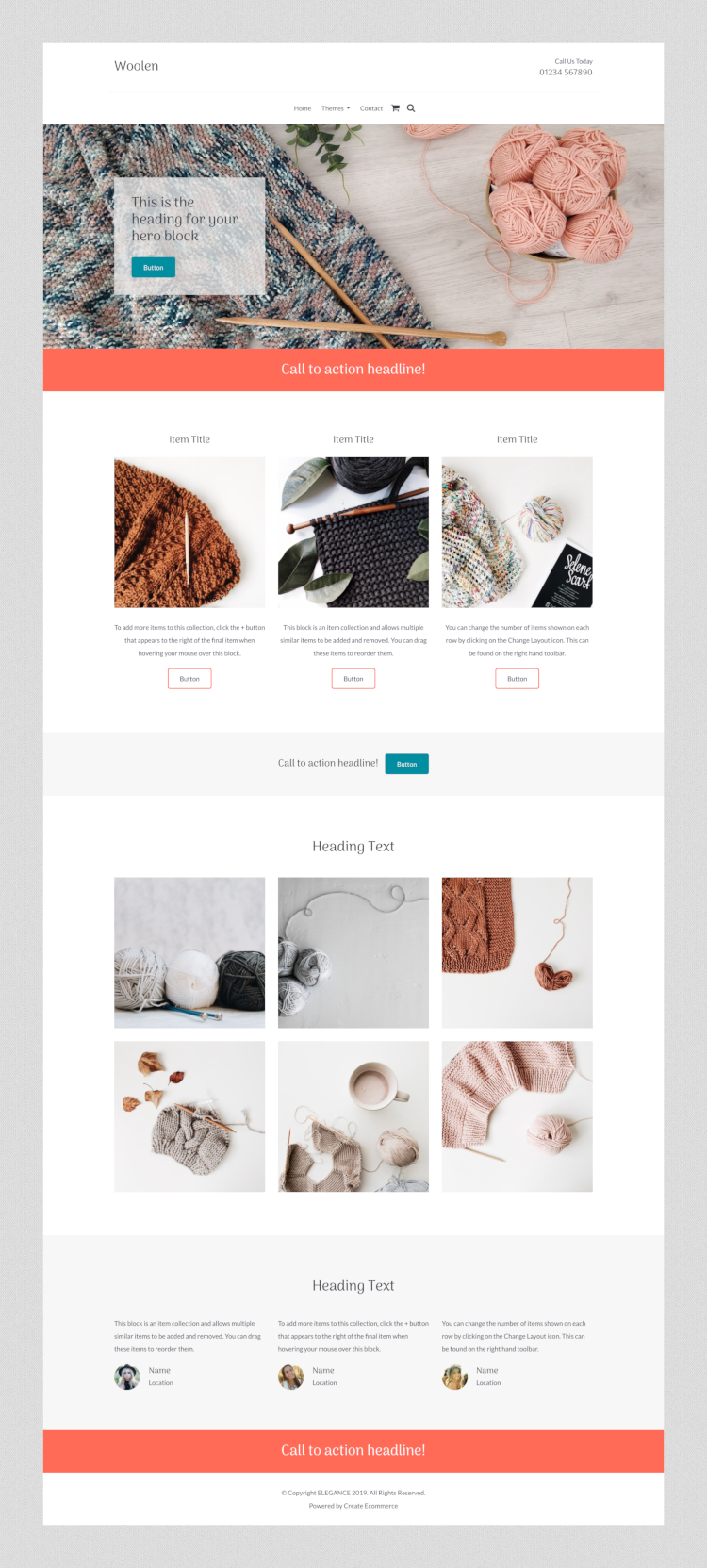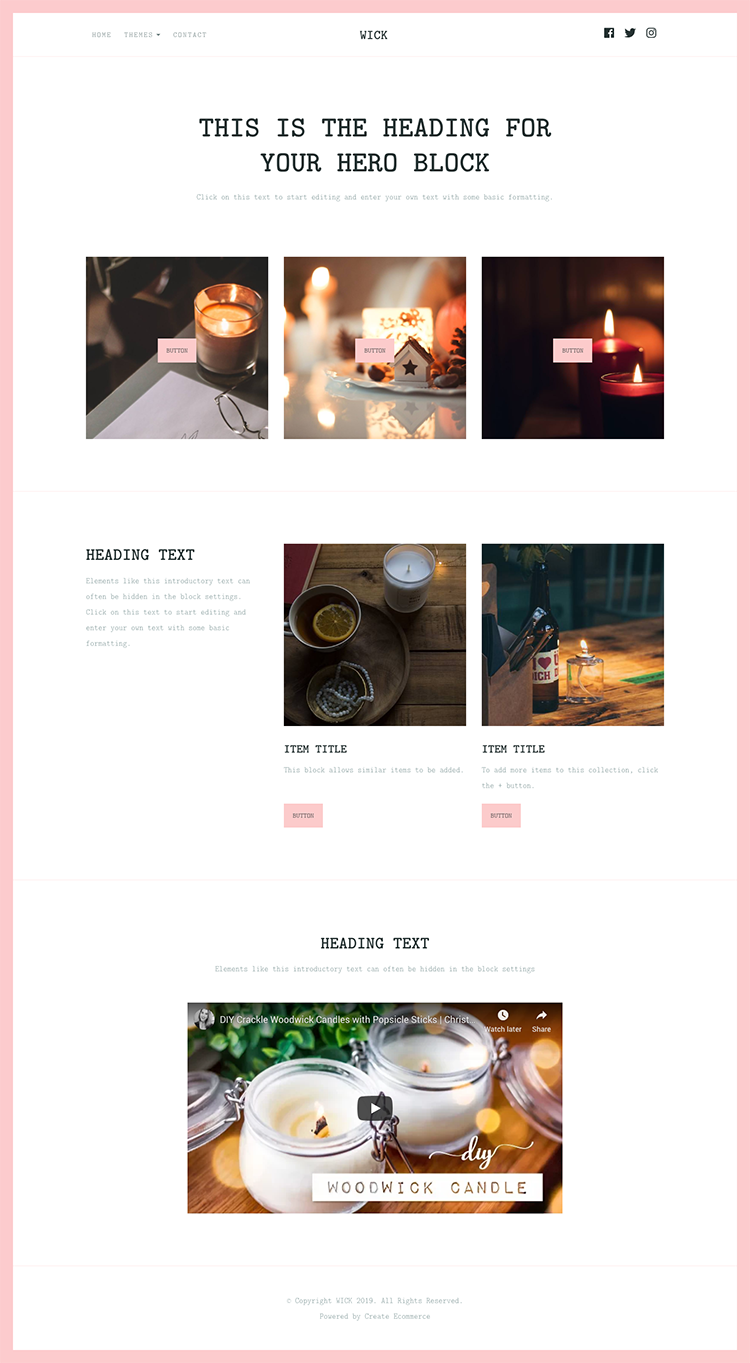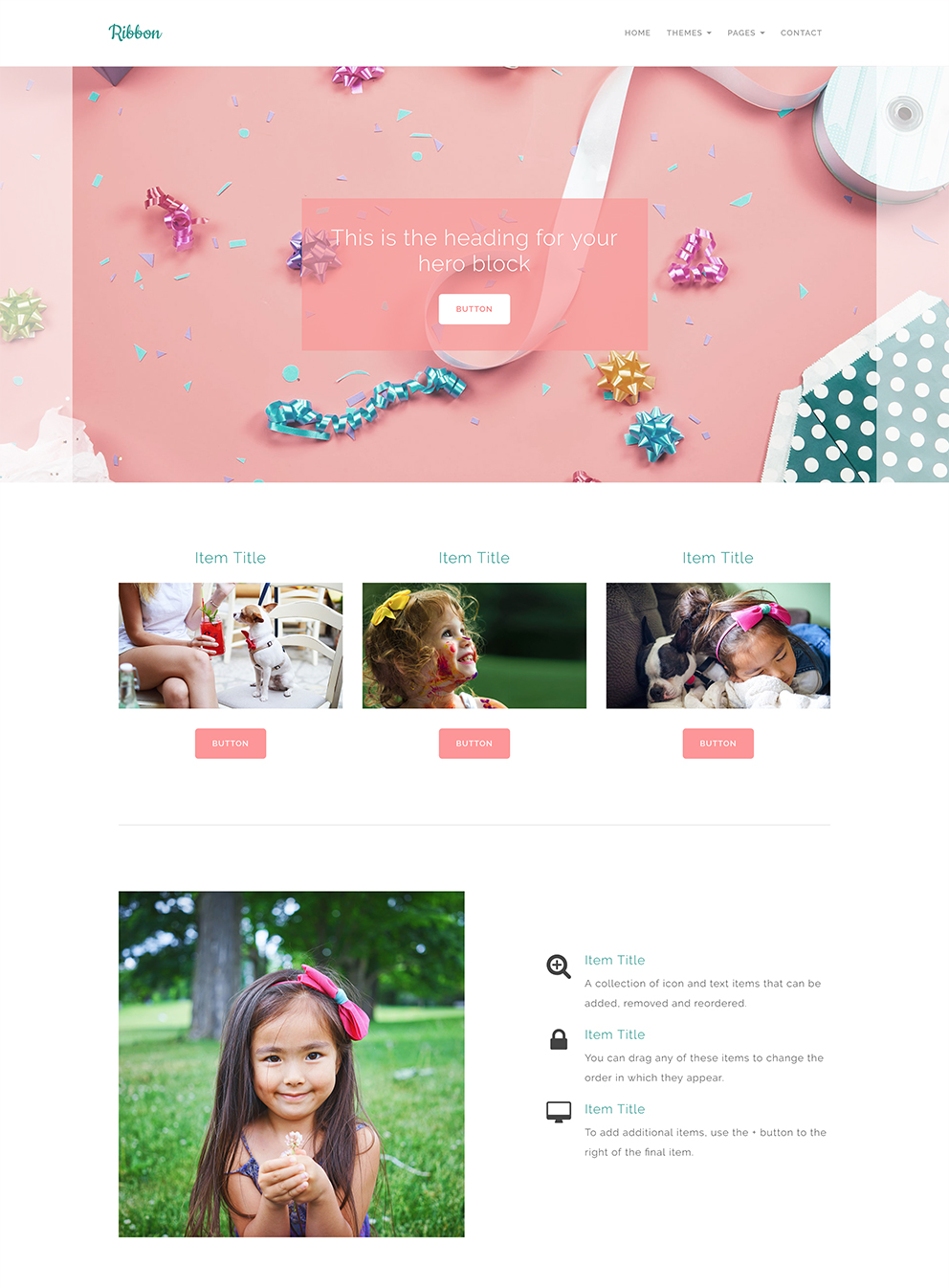Blog > How To Start A Successful Craft Business
Posted By Create
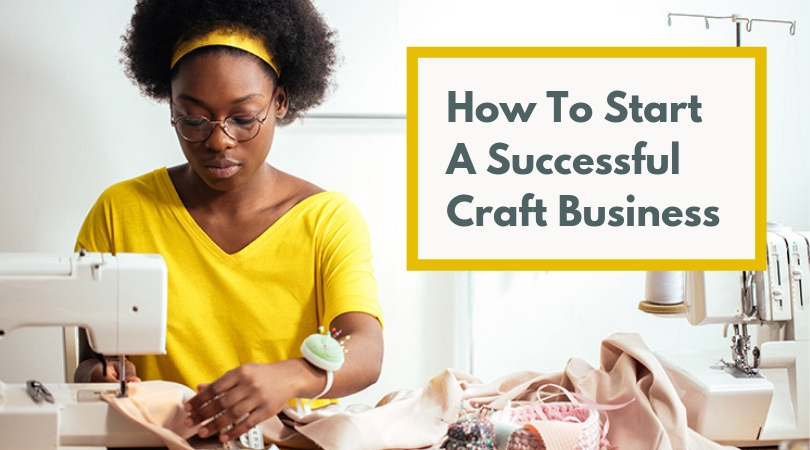
Want to start your own craft business? In this blog post - Fiona Pullen; Founder of The Sewing Directory, author of Making & Marketing A Successful Art & Craft Business and contributor to our recent blog post (How To Reach Your Goals - 7 Simple Strategies) shares her tips on getting started in the crafting industry.
Here are some of the key points she recommends when starting a new craft business:
In this harsh economic climate and an oversaturated craft market, it is quite a challenge to run a successful craft business. I thought I would share the lessons I have learnt in the 9 years or so that I've been running my business in the hope that it may help some of you.
I’ll start by telling you a little bit about myself and how/why I started my business. I was a stay at home mum after having my son James and after a year I was getting very bored! Once maternity pay stopped I realised that I needed to earn some money, but I didn’t want to put my son in full-time childcare to go back to work so I decided I needed to think of something I could do from home. From what I have observed, this seems to be one of the common reasons for women entering the craft industry.
I started out working for my mum designing and running the website for her dressmaking business and then I spotted a gap in the market. There was a growing interest in sewing, yet highstreet sewing shops were disappearing and people didn’t know where to go to find supplies. That combined with a surge in online stores and increased use of the internet led to the idea of a sewing directory.
I researched the idea from home for a while and then realised I was going to need funding and business support. I applied to the Prince’s Trust Enterprise Program and fortunately was accepted. This gave me access to a one-week intensive training course covering business basics and a start-up loan to get the business off the ground. They also provided a business mentor who I could turn to for advice during my first 2 years of business.
Research
The Prince’s Trust taught me one very important thing, that research is critical! I thought I had done plenty of research before I went on the course but it was nowhere near what was actually needed.
You need to clearly identify your target audience – approximately how many of them are there, how will you be able to reach them, what kind of money will they be prepared to spend, what will they expect from you?
You also need to ensure you research your competitors (please note this does not mean copy them!). Who are your competitors, what do they do well, what do they do badly, what will differentiate you from them? Learn from their strengths and weaknesses, be inspired by them and try not to duplicate their mistakes.
Thirdly, you need to research your costs: contact suppliers and find out how much your materials will cost you, contact magazines/websites/blogs and find out how much an advert will cost, how much will it cost you to get a website, what are the sales costs for selling through an online marketplace like Folksy, Etsy, Not On The Highstreet etc?
Research how you are going to raise the money to start, the best loan rates and terms, grants, savings etc and don’t forget to work out how you will pay it back in the event that the business fails.
Ensure Your Business Idea Is Financially Viable

Once you have researched all your costs you will be in a position to work out whether your business is viable.
Calculate the cost to produce each item in materials, factor in any overheads and most importantly factor in your time! This is the one area that many crafters tend to forget. Your time has a cost, how much cost is up to you.
If you genuinely love what you do and don’t want/need to be paid much more than minimum wage then cost your time out on minimum wage. If you expect to be earning £20 an hour then you need to work out what that will make your final product cost and whether you will be able to sell at that price.
Once you have decided your business idea is viable, and you can find a way to source the initial capital, or if you are going to build up slowly with a low outlay please don’t forget to factor in the fact that you will probably not be making money from the day you start.
I’ve seen people struggle because they have forecast that they will be earning x amount per month, but failing to realise that it takes several months to build up a customer base and to establish regular sales. Unfortunately, it is not as easy as making a product, listing it for sale and then waiting for the money to roll in. You need to promote your products/shop/service continually to keep a steady income coming in.
Support

There are many agencies both local and national who will help you with finance and support for starting a business. I was lucky enough to fall within the criteria for the Prince’s Trust (aged under 30) but most local councils offer help and funding, plus there are local agencies such as Venture Wales who I did some marketing courses with. If you search the internet for ‘business support’ followed by your town or area you will find your local one. Most of them offer free training courses, networking events and some offer a mentoring service or the chance to have a one on one meeting with a business advisor.
There is also a wealth of support online; I’ve listed a few of the sites I’ve found useful below:
A few of the sites are for Welsh based agencies as that is where I was based when I set up The Sewing Directory, but the information is useful wherever you are based.
Most business support agencies or websites will be able to give you advice on raising finance. Many local councils are trying to encourage new business start-ups so are a good place to start. There are agencies/charities who will give grants, you can get loans from banks or even from family members.
The one thing I would advise is that if you can do it without taking a loan then do, having a loan hanging over your business creates a lot more pressure. It can also be disheartening when every penny you earn for the first few months/years goes straight back out onto your loan.
However, do bear in mind what I said earlier, that it can be several months before you start making money so you need to make sure you have enough money put aside to survive those first few months/first year.
Accounting
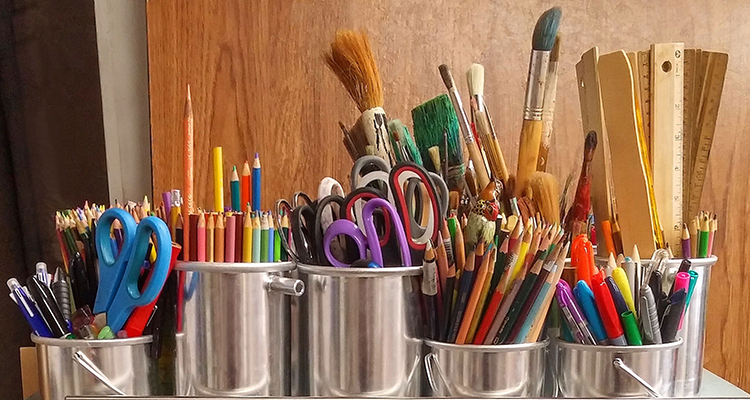
Firstly I would like to point out that I am not an accountant, my advice is based purely upon what I have learnt in the last year running my own business. I would highly recommend the Inland Revenue courses on starting your own business and submitting your tax return. They are free and are very useful, plus you have the chance to ask questions. Contact HMRC to find out when your local courses are or do one of their online webinars.
Accounts are one of those things that people dread so they tend to put it off for as long as possible. I really do not see the point in this as it only makes it harder when you finally get to them. How will you remember what the mystery £6 transaction is on your account a year later?
I started out with intentions of balancing my accounts every single month, and of course, that didn’t happen. However, I do make sure I do it every 3 months, that way when you come to the end of the financial year, it isn’t half as daunting.
If you are relatively up to date with your accounts it will be easy to submit them early in the new financial year. There are two benefits to that, firstly you don’t have the worry of having to do them at the back of your mind for months, and secondly, it gives you longer to pay your tax bill. Also don’t forget to register as self-employed when you start your business, the details of how to do it are here. It’s a quick and easy process and it ensures you pay your national insurance contributions.
If you spend a fair amount of time on your computer, as I do, then I’d highly recommend putting your accounts into a spreadsheet and update it every morning or evening. I tend to update mine both late morning and late evening so it is constantly up to date.
Also as a little motivating factor, the first sheet of my spreadsheet has just 4 figures – total turnover, total outgoings, profit for the year to date and current solvency. It’s nice to be able to open the file and see how much you have achieved so far that year.
For my receipts, I have a big box folder that I store physical receipts in and an e-mail folder for online receipts. If my laptop is off I put paper receipts in the laptop (between the keyboard and screen) so I remember to enter them onto my spreadsheet before filing them. You can find various bookkeeping, cash flow, invoice templates for free online.
Craft Insurance

Many crafters aren't aware that they need insurance, and often don't know what type of insurance they should be looking for even if they do realise that they should be insured. Below you can find out the types of insurance you should be considering if you run a craft business and details of where you can purchase them.
It may seem tempting to keep costs down by not being insured, especially when you are only making a very small profit on your business. However, if for instance someone was injured by one of your products or tripped on part of your craft stall at a market you could be looking at thousands in damages. So for the sake of what often comes to less than £100 a year you can get peace of mind.
There are 5 main types of insurance that people running a craft related business need to consider:
Product liability – If you supply products then you are responsible for any injury to a person, or damage to their property, which may occur as a result of the use of your product. Product liability insurance can meet the cost of any claims that arise.
Public liability – Public liability covers any injury or property damage that occurs to a member of the public in connection to your business. If for instance you teach sewing and someone in your class sustains an injury or someone trips over some goods you laid out at a craft market this is the insurance you need. It can also be used to defend any claim made against you as well as for compensating any injured party.
Tip – Many craft fairs won’t let you have a stall unless you can show them your public liability insurance certificate.
Tradesman Insurance - You can often find that if you don't have traditional retail premises that tradesman's insurance may be a better fit for your business. This can provide cover for your tools, your premises and any potential liability that may arise.
Professional indemnity – If you give advice as part of your business (if you are a business consultant or a craft teacher) or offer a service (like social media management) you need professional indemnity insurance to protect you from any claims of professional negligence.
Employer’s Liability - If you employ anyone to help you with your business then you need to have employer’s liability insurance. This protects you from any claim from employees who say there were injured or became ill as a result of their work whilst in your employment. This insurance is compulsory in the UK and you must have a minimum coverage of 5 million pounds.
If however, you are a family business and not a limited company you may be exempt from this requirement. For more information please look at the Employers’ Liability (Compulsory Insurance) Act 1969.
Other insurance you may also want to consider is accident & sickness insurance (to help you pay the mortgage etc if you are unable to work), vehicle insurance if you use a business vehicle and cancellation insurance for shows and events so you don’t end up out of pocket if they don't go ahead for any reason.
To get quotes for craft insurance, try the businesses below:
IMPORTANT – All insurance policies have exclusions so make sure you have a good look through to understand what you are and aren’t covered for. For instance, most policies won’t cover claims that arise as a result of your negligence, or your failure to comply with health and safety or product safety laws. Also, some of the policies may only cover selling at events and shows and not online or trading from commercial premises not from home so double check the small print. When in doubt, ask before you buy. On that note don't forget to notify your home insurer if you start to run a business from home or it could invalidate your policy.
Finding Wholesalers
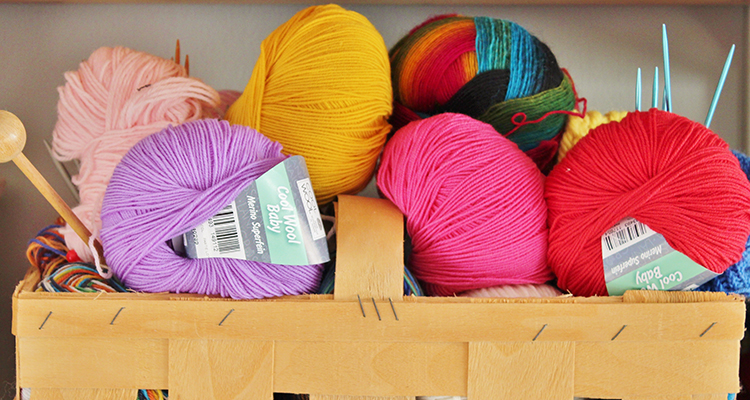
Once you decide to turn your love of craft into a business one of the first things you need to do is find somewhere to buy your supplies at wholesale prices. If you continue to buy retail you will have to price your products much higher to cover your costs. Bring the materials cost down and you'll have more profit and fewer costs.
There are a few places you can find wholesale suppliers:
-
I have a big list of wholesalers (mainly fabric and haberdashery ones) on my Sewing Directory website.
-
Trade magazines such as Craft Focus and Craft Business have many craft wholesale businesses advertising in their publications plus supplier directories on their websites.
-
Trade shows much as Craft, Hobby & Stitch International are a great place to find hundreds of wholesalers all in one place.
Presentation

Remember that you are representing your business at all times, particularly when at craft fairs, networking events as well as on social networks too. I’m not saying you need to be dressed up in a full suit at all times but bear in mind that first impressions really do count so make sure you are projecting the image you want, whether in person or online.
Also under this section, I would like to emphasise the importance of a professional looking website, especially when you are selling online. You do not need to pay a fortune to have a nice looking website. I’ve seen many Create.net sites which look as good as those that have been designed by professional web designers.
*Get started with one of our Craft Website Templates down below
Want Your Own Website?
Start Building Today!
No credit card needed. By submitting this form you agree to our T&Cs and Privacy Policy.When designing your website make sure that it is easy for people to search and to locate what they are looking for, that your contact details are easy to find and that you use good quality images. Nothing says ‘shoddy site’ more than dark, gloomy, low-quality images. For online sales, the image is what sells your product so it’s worth the cost/effort to get good quality images.
Make sure you have good quality professional looking business cards as these often form part of people's first impressions of you when they meet you at an event. Personally, I find Moo business cards look great and I love the fact you can have lots of different images on them. A great chance for you to showcase your products.
Reputation

The most important thing in running a business is to focus on getting a good reputation. A bad reputation can do an unbelievable amount of damage to your business. For most people, there will be many other companies offering the same product/service as you, so if you get a bad reputation the customer will just go to one of your competitors.
The most important factor in building a good reputation is customer service. Keep your customer updated and informed at every stage of the process. Deal with any queries or issues in a timely manner. Treat every person you deal with using the same standard, whether they buy your product/service or not. Just because they don't buy now doesn't mean they won't in the future, or won't recommend you to a friend.
Focus on customer loyalty. I find the most off-putting thing is people not replying to your emails or phone messages. Even if you cannot give an answer instantly reply to the email to acknowledge receipt and let them know you will get back to them soon rather than keeping that person waiting. Lack of communication is inexcusable.
Many of us start off with the aim of replying to every email straight away but once your business starts to grow that becomes impractical. However, to send a response or acknowledgement within 24-48 hours is a reasonable aim and will help to keep your customers happy. I have stopped dealing with companies in the past because weeks later they have still not replied to my email; you start to wonder if they really want your business at that point.
Another important point in customer services is to deliver on your promises. If you tell people they will receive your product within 3 days, and 5 days later they have to contact you to find out where it is, that will make the customer think you are not trustworthy as you do not keep to your promises. You are better to under-promise, and say it will take 5 days and deliver within 3 days than the opposite.
We all know that unexpected problems can arise that can affect your promise, but then we are back to the customer service/communication point. If you cannot keep the promise you have made then take the time to contact them and let them know, and when they can expect to receive it. Most people still consider it to be good service, irrespective of delays etc if they have been kept updated throughout.
Another important thing when dealing with other businesses is to make sure you pay your bills on time. Once you get a reputation for being a late payer, or as someone who is difficult to get money off of, you will find several companies are no longer willing to deal with you. I find the easiest way to keep on top of bill paying is to pay them straight away if possible, then you don't have to worry about missing the deadline.
One other quick note on this subject is to remember that comments you make on your blog/Twitter/Facebook even when relating to personal things still reflect on your business. Many of us use these platforms for both personal and business reasons so you have to remember your customers, as well as your friends, can see your updates.
Be careful of the language you use, and the topics you choose to discuss as they could put off potential customers. You are best off presuming that everything you put online is being read by potential customers.
Dealing With Problems

This point ties in very well with the point above. As noted before, problems do arise and they can adversely affect your business. Your supplies might not be delivered in time, meaning you cannot meet a delivery deadline. A cheque might not clear when you expected, leaving you unable to pay an invoice. These things happen to the best of us and are often beyond our control.
What matters is how you deal with it. Communication is the key, contact the person awaiting the product/payment, explain the problem, apologise and let them know when they can expect it.
I’ve found the sewing/craft industry to be full of very friendly, supportive people. If you have a problem, try asking for help. If you can’t find a particular supply etc ask others in the industry and you will probably find there are many people who will be glad to help you. Hurdles are there to be overcome, you just have to think about how you will get over them.
If the problem is one of your customers, they are unhappy with your product or service, keep a professional manner, stay polite and let them know how you will resolve the issue. Bear in mind that negative comments circulate a lot quicker than positive ones, particularly since the advent of Twitter and other social networks. The last thing you want is someone tweeting about the awful service/product they received from you. Even though it may leave you out of pocket giving a refund to an unhappy customer can often cost you a lot less in the long run!
Keeping Motivated

I won’t lie to you, running your own business is very hard. There will be days when you wonder why on earth you even bothered. Some days you may be up working until 3 am, see comments on Facebook criticising your work, not get paid for a job you have done, have a customer poached by a competitor etc. Running your own business is an emotional roller coaster, you will have good days, you will have amazing days, but then you will also have really bad days.
The main thing you have to do is remind yourself why you are doing it. If you are running your own business so you can be at home with your children, focus on that, if it is to pay for a few holidays, or even to pay your mortgage, keep thinking about that. No matter how bad things get it is all a learning experience, even if your business fails you will have gained invaluable knowledge from running it.
It pays to take stock every now and then, summarise what you have achieved turnover wise, number of sales, hits to your website, social networking fans etc. Take a break from the day to day details of the business every now and then to step back and look at the bigger picture. This really helps to motivate you when you look over your past successes and don't dwell on any current issues.
You also have to learn to prioritise and accept you can’t do everything. When it all seems overwhelming, make a list, move things into an order of importance and then feel proud of yourself as you tick things off. Don’t panic if you don’t get everything on the list done (I have things that have been on there for years!) just think of what you have achieved with the things that you have taken off the list.
In Summary, Here Is What You Need To Consider When Starting A Craft Business:
-
Research Your Market - Initial research is critical to success. By finding out about your target market, competitors and costs, you can make informed decisions for the long-term.
-
Ensure Your Idea Is Financially Viable - Once you have done your research, you can start to plan what to price your items at and what costs you will incur. Don’t forget to factor in your time!
-
Seek Out Support -There are a number of initiatives across the UK that aim to support startups. By seeking out their help, you can access a wealth of resources and potentially acquire grants and loans.
-
Focus On Your Accounts -The government provides courses on how to do your accounting on the HMRC website. Keeping on top of your accounts can save you a lot of stress ahead of deadlines.
-
Cover Yourself With Craft Insurance -Many crafters aren’t aware that they require insurance. Make sure to protect your business with all the necessary applications to stay above board.
-
Find A Wholesaler - Rather than pay retail prices for your materials, you can buy them wholesale to cut down on your costs. This gives you more flexibility when it comes to pricing your products.
-
Present Your Business - How your business is presented can help you to develop a positive reputation. Business cards and a professional website can help your customers develop the right impression of your brand.
-
Build a Reputation - A reputation can make or break a brand. By paying attention to details and giving your customers the service they deserve, you can keep them coming back and talking about your business.
-
Resolve Customer’s Problems Promptly - Problems naturally occur every now and then. The key is to keep your customers informed on what is happening and help move towards an agreeable outcome.
-
Stay Motivated - Running a business can be hard at times. Remind yourself of the reasons that you started on this journey to keep you motivated through the highs and lows of running a craft business.
Thanks for sharing your tips, Fiona! We're sure this will kickstart the fortunes of many a craft business! For more information on these topics, and other useful advice about running a creative business take a look at Fiona's Book: Making & Marketing a Successful Art & Crafts Business.
Craft Website Templates
Get a head start by building a website for your business with one of our craft website templates. Each can be fully customised and tailored to your requirements, or you can simply add your own content to them and publish them right away. Creating a website has never been easier.
See our full range of templates here or click any of the templates below to start your free trial.
Thread
Woollen
Wick
Ribbon
Studio
Want Your Own Website?



